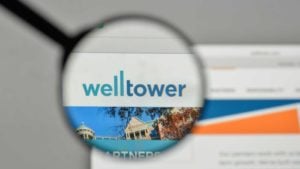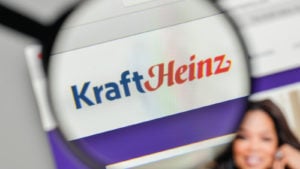Seasoned income investors know that the secret to good dividend stocks isn’t always about the size of the yield, it’s about the consistency. Income investing isn’t a short-term game. It’s a long-term strategy, so you need quality stocks that can deliver dependable income in good times and bad.
Newcomers in income or total return investing think big yields equal big opportunities. What they don’t understand is, many times those big dividends come with big risks.
The dividend stocks below don’t even fall into that category. These stocks have decent dividends but are in sectors where those dividends might now grow or are at risk of a cut.
For most stocks that offer dividends, a cut to the payout is like a run on a bank. You don’t want to get caught flat footed when the cut occurs, because most investors run to the exits.
Don’t get trampled by the stampede. Don’t make these stocks part of your income stock portfolio.
- Ventas (NYSE:VTR)
- Welltower (NYSE:WELL)
- PPL Corp (NYSE:PPL)
- Phillip Morris International (NYSE:PM)
- Kraft Heinz (NASDAQ:KHC)
- Realty Income Corp (NYSE:O)
- McDonald’s (NYSE:MCD)
Dividend Stocks to Avoid: Ventas (VTR)

Structured as a real estate investment trust (REIT), VTR specializes in nursing homes, medical offices, acute care centers and other medical properties. It has operations in the U.S., Canada and the U.K.
Broadly speaking, the healthcare sector is in a demographic uptrend in most of these countries as baby boomers start to retire over the next decade. That means more resources will be needed to care for their acute and chronic health issues.
However, the pandemic has hit eldercare facilities hard and many have been locked down until there’s less risk to the elderly population. Plus, people are rethinking the idea of what eldercare may look like. The pandemic has also superseded other healthcare goals with little policy changes in to help the system absorb the stresses.
VTR stock is up 16% year-to-date and it has a 3.2% dividend. It also has a price-to-earnings ratio of nearly 140x, with no way to grow earnings to meet its current price.
The dividend has an F-rating in my Portfolio Grader.
Welltower (WELL)

WELL is in the same markets and the same industry as VTR. And it has the same challenges.
There was a big run in this sector before the pandemic hit due to the attractive long-term demographics. But the past 18 months has shifted the short-term reality for this sector. And given the fact that there are a number of companies scrambling for market share right now, it’s not as exciting of a sector as it once was. It may take another year or so before it can get back on track.
Somehow WELL stock is up 30% YTD yet it actually has negative earnings. Its 2.9% dividend is attractive, but if things continue in this direction for its earnings, that dividend runs the risk of a cut.
The dividend has an F-rating in my Portfolio Grader.
Dividend Stocks to Avoid: PPL Corp (PPL)

Traditionally, two groups of stocks have been the most popular dividend stocks — REITs and utilities. I tried not to put a lot of them in here because newer investors are finding income in different places, looking for growth and income, or total return.
That’s not to say REITs and utilities don’t grow, but in the case of PPL, it’s a holding company for three different utilities. One is in the U.K., one is in Pennsylvania and the third is in Kentucky. As regulated utilities, they are given a rate of return by the state they operate in and then it’s up to them to add to that rate through efficiencies.
But the utilities market is changing and there are various forces making it harder for utilities to maintain plants and equipment and still get reimbursed for most of it. Aging infrastructure, the pandemic and other demographic shifts are challenging the industry.
PPL stock has gained almost 7% YTD and delivers an impressive 5.7% dividend. But its current P/E is sitting at 62x. That’s hardly a sustainable number.
The dividend has a D-rating in my Portfolio Grader.
Phillip Morris International (PM)

Big Mo as it was called in its glory days — its ticker symbol was MO — was established in 1847 with one key product. Tobacco.
Now, Big Mo has been split into two companies; one that runs its tobacco operations around the globe and another that focuses on the U.S. market. Whether its cigarettes, vapes or smokeless tobacco, nicotine has given way to cannabis for younger demographics.
That doesn’t help PM keep the lights on. Smoking is down in general and usually as developing nations transition to developed economies smoking tends to go down. Plus, regulations continue to get stricter and stricter regarding smoking, from marketing products to lighting up.
That’s why PM has always shared an attractive dividend. Currently it’s nearly 5.2%. And the stock is only trading at a current P/E of 17x. But growth and potential lawsuits are always a significant risk, especially after a pandemic.
The dividend has a D-rating in my Portfolio Grader.
Dividend Stocks to Avoid: Kraft Heinz (KHC)

Inflation. That’s a problem for a food and beverage company like KHC because it’s a low margin business that depends on volume. Inflation raises input prices, production prices and distribution prices. And there’s not a lot of room to raise prices to consumers since many of the brands already command premium prices to competitors.
This is the problem KHC stock faces now. And by all indications, analysts expect Q3 to be worse than the same quarter last year. Even the CEO is talking about the fact that inflation is looking more “here to stay” than “transitory.”
Granted, KHC stock is up 5% and has a 4.4% dividend. But weak earnings are likely to continue and there are better places to invest at this point in the company’s business cycle.
The dividend has a D-rating in my Portfolio Grader.
Realty Income Corp (O)

This REIT has income in its name, how can you go wrong? Well, you can wait for a better time to buy it, for one.
For the past 52 years, Realty Income has been known as one of small number of reliable dividend stocks that continues to pay out year after year. Or, more accurately month after month, since O provides a monthly dividend.
Many income investors add O to their portfolios to get that regular dividend check that augments the typical quarterly payments of most dividend stocks. O stock is currently delivering a 4% dividend on top of a 22% YTD return.
The trouble is, it’s trading at a current P/E of 71x. That’s quite a valuation given its low-key business in this transitioning market. It’s not the time for this one.
The dividend has a D-rating in my Portfolio Grader.
Dividend Stocks to Avoid: McDonald’s (MCD)

Like many of the companies here, there’s nothing horrible about MCD stock or the safety of its dividend. The stock isn’t overvalued. There’s no bad news that’s going to hit it hard.
You simply have inflation issues and how MCD decides to pass that along to its customers. And staffing. Those are challenges, but MCD stock has fared more challenging storms than this. However, a prolonged worker shortage means the company will have to raise wages and that along with higher food prices could hurt earnings.
And there’s the question of whether consumers will choose to eat out less if prices rise, since MCD is competing with other fast-food companies for the same mouths. MCD stock has gained 13% YTD and has a 2.3% dividend, which doesn’t even keep pace with inflation.
The dividend has a D-rating in my Portfolio Grader.
On the date of publication, Louis Navellier has no positions in the stocks in this article. Louis Navellier does not have (either directly or indirectly) any other positions in the securities mentioned in this article. The InvestorPlace Research Staff member primarily responsible for this article did not hold (either directly or indirectly) any positions in the securities mentioned in this article.
The opinions expressed in this article are those of the writer, subject to the InvestorPlace.com Publishing Guidelines.
Louis Navellier, who has been called “one of the most important money managers of our time,” has broken the silence in this shocking “tell all” video… exposing one of the most shocking events in our country’s history… and the one move every American needs to make today.
